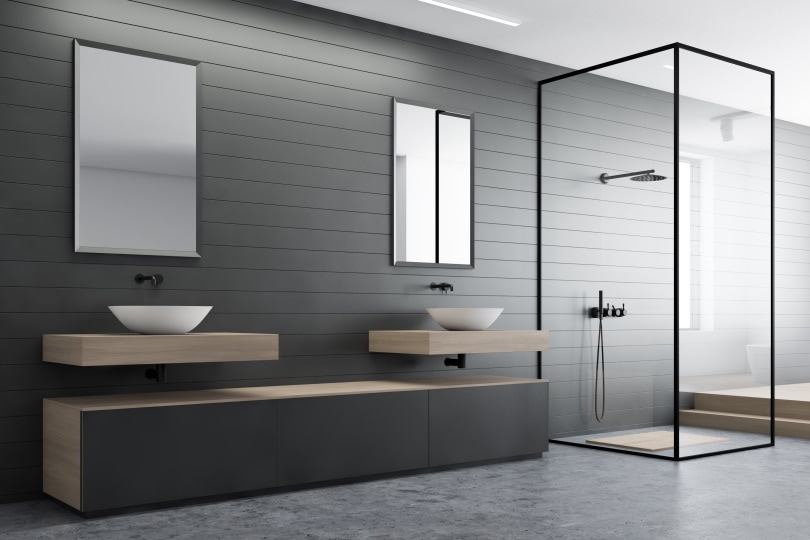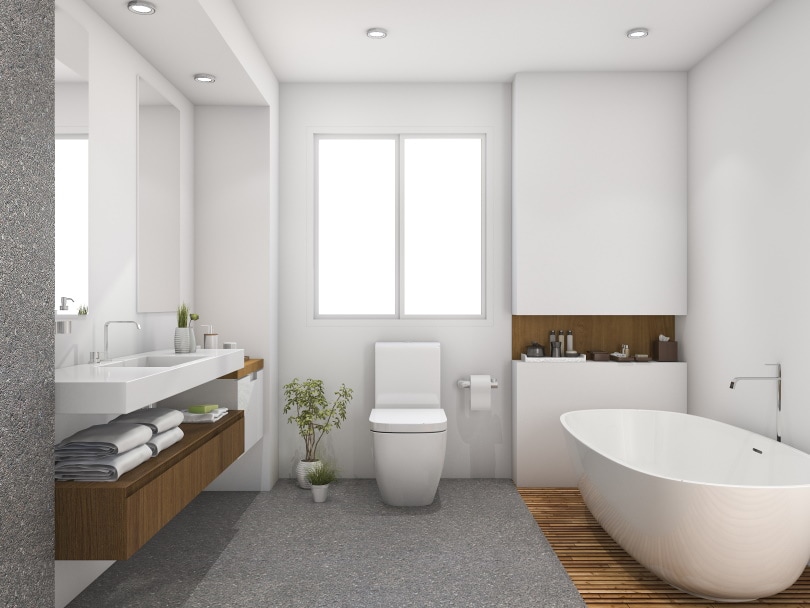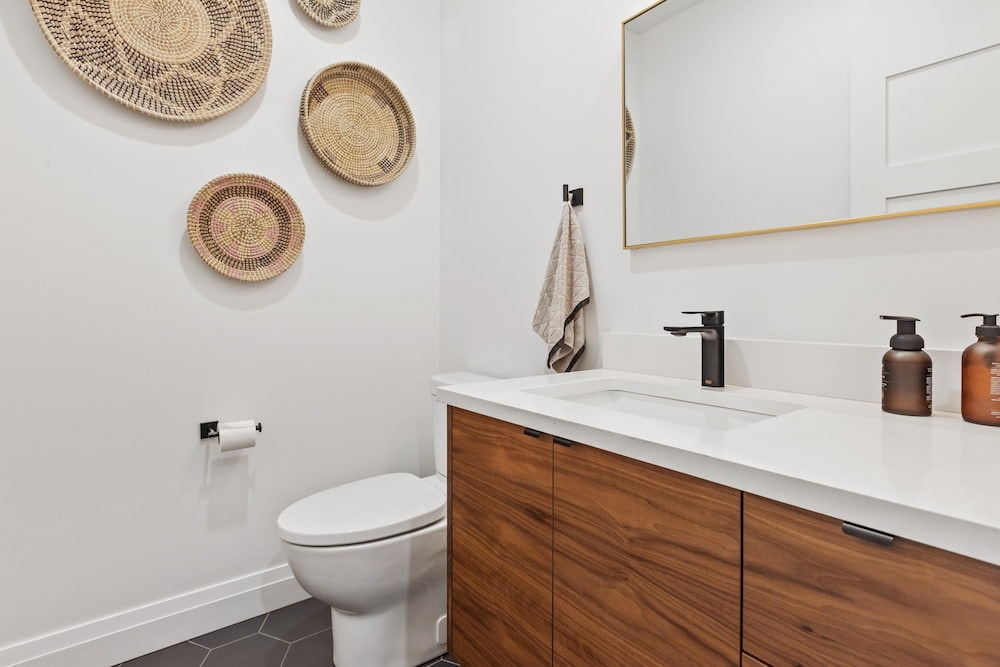What Type of Paint Should I Use for a Bathroom? Facts & FAQs
-
Codee Chessher
- Last updated:

Unlike the rest of your house, bathrooms call for certain types of paint that resist moisture while standing up to the occasional scrub. If you use the wrong type of paint in a bathroom, you’ll quickly find it bubbling, cracking, and peeling.
For best results in a bathroom, use a glossy, satin, or semi-gloss paint with an anti-mildew additive. Matte or flat finishes are more difficult to achieve in a bathroom, but it’s possible if you’re determined.
Why Use Glossy Paint in Bathrooms?
Glossy, satin, or semi-gloss paint is ideal for the bathroom because, when dry, it forms a hard, waterproof outer layer. When wet, water will bead up and simply slide down and off the wall. As you can imagine, this is a valuable property for a bathroom wall.
Flat or matte paints tend to develop bubbling, cracking, peeling, and other problems. When water gets on those paints, it may seep between the wall and paint. After that, you see the aforementioned issues. Generally, though, low-sheen paints will absorb some level of moisture.
Glossy paint is the easiest to clean, though it does not disguise imperfections in the wall very well. Satin is a little softer while retaining an attractive sheen, and it is almost as easy to clean. Semi-gloss paints are also—no surprise—easy to clean while coming in a wide variety of colors.

Oil or Water-Based Paint for Bathrooms?
Oil-based paints are commonly considered the best type for bathrooms because they’re resistant to water and abrasion, but they take a long time to cure and produce bad odors in the meantime. It doesn’t help that cleanup requires mineral spirits and solvents, either.
Water-based paint gets a bad rap for not being as durable as oil paint, but in recent years, it’s come a long way. It dries very quickly and cleans up with water, and many varieties these days are just as durable as oil-based paints. Look out for “Washable” paints, as this means the paint is water and abrasion resistant.

What if I Want a Matte or Flat Finish?
Matte, flat, and eggshell paints add a soft dimension to a room, so it’s understandable why you’d want that finish in your bathroom. Until recently, it was virtually impossible to successfully paint a bathroom with these types of paint.
Thankfully, recent advances in paint technology have yielded flat, matte, and eggshell paints suitable for use in the bathroom. These paints may be difficult to find, so look out for paints advertised as mildew-resistant and “Spa & Bath” style paints.
For best results with these types of paint, you need to first apply a high-quality, mildew-resistant primer that’ll help your paint stick. Without primer, the paint will likely bubble, peel, or crack. Prioritize primers that are compatible with your chosen paint or opt for a two-in-one paint that contains primer.
Conclusion
Bathrooms may require a little extra consideration to paint because of how moist and humid they get, but gloss-style paints are the gold standard. They’re durable against abrasion and water alike while coming in a wide variety of colors. For best results, use primer before you paint your bathroom.
Featured Image Credit: ImageFlow, Shutterstock
Contents
